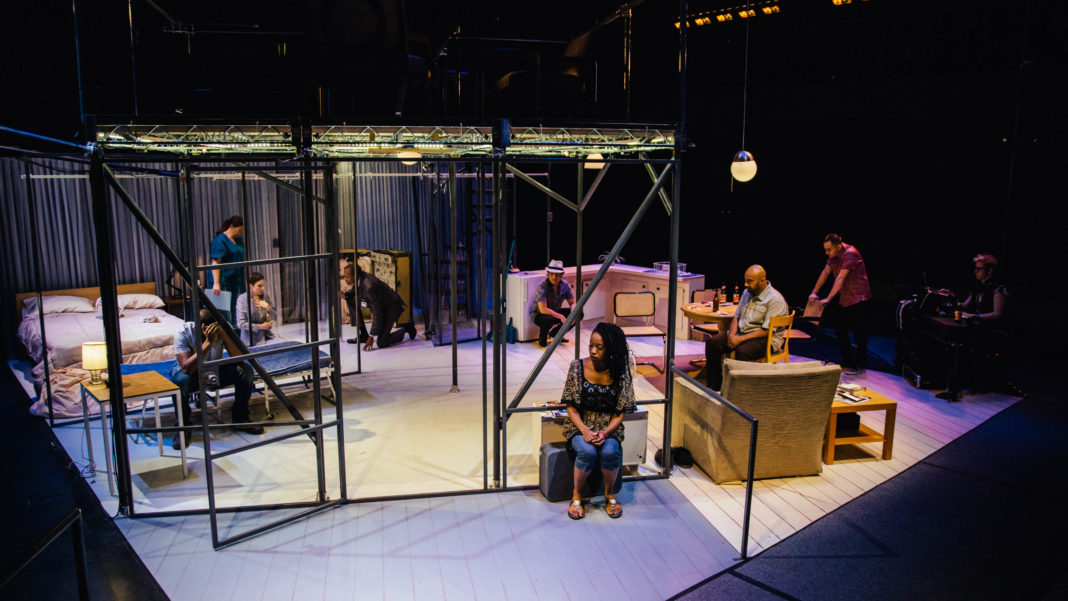The words reboot, revised, reimagined, reawakened are used rather carelessly to reposition a new or different take on a classic piece of material. No doubt there were skeptics when director Michael Michetti chose to (insert your favorite of the four verbs above here) Tennessee Williams’ masterwork A Streetcar Named Desire. Through multi-racial casting and unique staging, not only has Michetti seemed to pull it off, but he has done another rare feat in Los Angeles: he’s put together a production that isn’t called Hamilton and still sold out its entire run at the Boston Court Theatre in Pasadena.
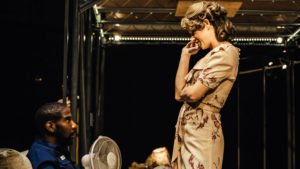
Local audiences may know Michetti’s recent work at the Pasadena Playhouse with their production of King Charles III. Not needing to talk about the production to boost ticket sales, I had a refreshingly frank conversation with Michetti about his vision, how he feels this version is faithful to the playwright’s intent and the risks any director takes when trying to breath new life into a classic play.
What inspired this production for you?
I’ve always loved the play and have seen many productions. I was re-reading it and then began to realize, in a deeper way than I had understood, that one of the things Williams was dealing with was the difficulty of people facing the changing demographics of our world.
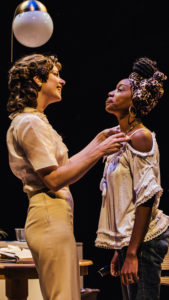
Blanche represents privilege from Southern Plantation life and debutante balls and was coming into a city that was vibrant, impoverished and multi-cultural/multi-ethnic and she was having troubles in this changing world. That was very true of our cities after World War II when [the play] was first produced. It is something we are still dealing with.
When re-read through that lens, I thought what if we amped up these themes and made clear those themes Williams was going after. That was the inspiration. The Williams Estate won’t allow you to change race, time periods or accents without permission. We had to make the pitch.
When did you realize that taking this risk with the play would work out?
This was an idea I had been toying with for 2-3 years before we got into it. Through most of this time I was imagining it in my mind. The first time I heard it and what I hoped we could do was in auditions. That was one of those moments where I got this jolt of excitement that we were onto something really great. We were discovering right up to moments before opening. Until you get the last part of the recipe, which is adding the audience and seeing their response, you don’t really know what you have or how they will react.
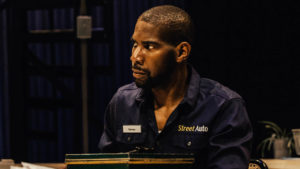
Desean Kevin Terry, who is African-American, plays Stanley Kowalski, the role made famous by Marlon Brando. How large is the shadow cast by Brando over anyone tackling this role?
He haunts it a lot! I was really thrilled when Desean and I really worked with it. He was aware of the film, but had not seen it in a long time. So he was approaching this in a very different way. For us approaching it as an African-American man in 2018, it’s a very different person than Brando created. The script tells us that Stanley is a salesman for some kind of company selling auto parts or something like that. An African-American man selling for a company like that today would have to have a certain polish and couldn’t be as working class as Brando was in the film. He’s not deliberately trying to be the anti-Brando, but he’s making choices to go in a very different way that shook off the ghosts of Brando.
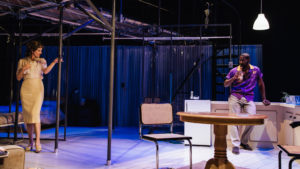
For every successful revival of a play with a new vision that succeeds there seem to be dozens more that fail miserably. How risky is this for you as a director?
I have seen brave attempts at revitalizing and re-envisioning classic productions that have worked wonderfully and ones that have failed miserably. Some of the ones that worked wonderfully have revealed a whole new play I didn’t know. The great thing is these plays still exist. A production that tried and didn’t work doesn’t mean the property has been hurt by it. I think it is important that we allow artists to find new things in classic works. Particularly ones that have been produced as often as plays like Streetcar. I’m a big fan of Ivo van Hove who dusts things up and reveals things. I remember seeing Hedda Gabler directed by Ivo in New York. That was not Ibsen’s Hedda Gabler. It used his text, but it revealed a whole other play. There was an example of taking it too far and reaping some great rewards.
Did you see his production of The Crucible? I thought by making the girls actually witches he destroyed the metaphor Arthur Miller was using as the center point of the play.
I had the same feeling about that production. There were many things I found invigorating and exciting, but that central thing made it a different play. I had trouble seeing that there was greater merit in telling a play about actual witches than telling the story Miller had written. I wish I could sit down for coffee with him so I could understand that more.
So when do you know, as a director, whether what you are doing is going to end up being a disservice to the play?
It’s a really good question. I don’t know that I have an answer for you. I always make a deal with myself going in that if I get to the point in the process where it feels like what I’m doing is fighting the play too much or that the play is fighting what I’m trying to do too much, that I will back off from it. Yet there does come a time, and this is the nature of making theatre, you question how and where you can course-correct things once that course begins. It’s always a tricky thing in theatre.
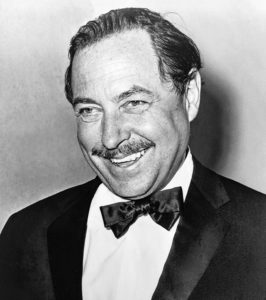
If Williams were to walk in and watch your production, what do you think his response would be?
I think he would freak out a little bit because there’s a lot of technology that, when he was alive, he didn’t even experience. The whole way we are presenting this is so new to him. He was frequently excited when somebody brought new ideas about one of his plays. He had a lot of thought in his lifetime about Stanley being played by an actor of color. I don’t know that he was ever able to experience that. I would like to think he’d be very excited. I’d like to think he’d be very invigorated by how relevant the themes feel in this production.
Production Photos by Jeff Lorch.











